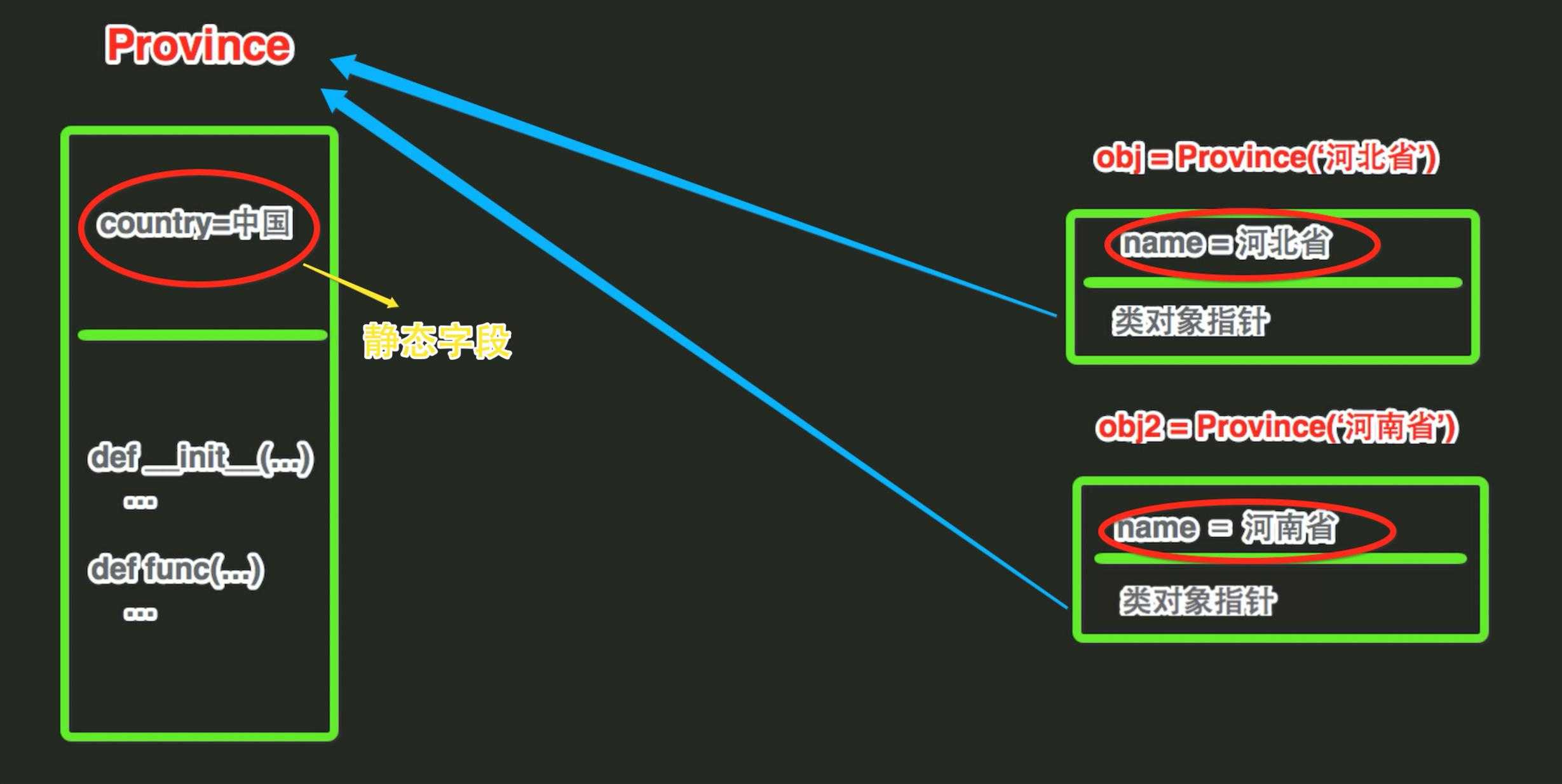python——面向对象相关
Posted
tags:
篇首语:本文由小常识网(cha138.com)小编为大家整理,主要介绍了python——面向对象相关相关的知识,希望对你有一定的参考价值。
其他相关
一、isinstance(obj, cls)
检查是否obj是否是类 cls 的对象
|
1
2
3
4
5
6
|
class Foo(object): passobj = Foo()isinstance(obj, Foo) |
二、issubclass(sub, super)
检查sub类是否是 super 类的派生类
|
1
2
3
4
5
6
7
|
class Foo(object): passclass Bar(Foo): passissubclass(Bar, Foo) |
三、异常处理
1、异常基础
在编程过程中为了增加友好性,在程序出现bug时一般不会将错误信息显示给用户,而是现实一个提示的页面,通俗来说就是不让用户看见大黄页!!!
|
1
2
3
4
|
try: passexcept Exception,ex: pass |
需求:将用户输入的两个数字相加

while True: num1 = raw_input(‘num1:‘) num2 = raw_input(‘num2:‘) try: num1 = int(num1) num2 = int(num2) result = num1 + num2 except Exception, e: print ‘出现异常,信息如下:‘ print e
2、异常种类
python中的异常种类非常多,每个异常专门用于处理某一项异常!!!

AttributeError 试图访问一个对象没有的树形,比如foo.x,但是foo没有属性x IOError 输入/输出异常;基本上是无法打开文件 ImportError 无法引入模块或包;基本上是路径问题或名称错误 IndentationError 语法错误(的子类) ;代码没有正确对齐 IndexError 下标索引超出序列边界,比如当x只有三个元素,却试图访问x[5] KeyError 试图访问字典里不存在的键 KeyboardInterrupt Ctrl+C被按下 NameError 使用一个还未被赋予对象的变量 SyntaxError Python代码非法,代码不能编译(个人认为这是语法错误,写错了) TypeError 传入对象类型与要求的不符合 UnboundLocalError 试图访问一个还未被设置的局部变量,基本上是由于另有一个同名的全局变量, 导致你以为正在访问它 ValueError 传入一个调用者不期望的值,即使值的类型是正确的

ArithmeticError
AssertionError
AttributeError
BaseException
BufferError
BytesWarning
DeprecationWarning
EnvironmentError
EOFError
Exception
FloatingPointError
FutureWarning
GeneratorExit
ImportError
ImportWarning
IndentationError
IndexError
IOError
KeyboardInterrupt
KeyError
LookupError
MemoryError
NameError
NotImplementedError
OSError
OverflowError
PendingDeprecationWarning
ReferenceError
RuntimeError
RuntimeWarning
StandardError
StopIteration
SyntaxError
SyntaxWarning
SystemError
SystemExit
TabError
TypeError
UnboundLocalError
UnicodeDecodeError
UnicodeEncodeError
UnicodeError
UnicodeTranslateError
UnicodeWarning
UserWarning
ValueError
Warning
ZeroDivisionError

dic = ["wupeiqi", ‘alex‘] try: dic[10] except IndexError, e: print e

dic = {‘k1‘:‘v1‘}
try:
dic[‘k20‘]
except KeyError, e:
print e

s1 = ‘hello‘ try: int(s1) except ValueError, e: print e
对于上述实例,异常类只能用来处理指定的异常情况,如果非指定异常则无法处理。
|
1
2
3
4
5
6
7
|
# 未捕获到异常,程序直接报错s1 = ‘hello‘try: int(s1)except IndexError,e: print e |
所以,写程序时需要考虑到try代码块中可能出现的任意异常,可以这样写:
|
1
2
3
4
5
6
7
8
9
|
s1 = ‘hello‘try: int(s1)except IndexError,e: print eexcept KeyError,e: print eexcept ValueError,e: print e |
万能异常 在python的异常中,有一个万能异常:Exception,他可以捕获任意异常,即:
|
1
2
3
4
5
|
s1 = ‘hello‘try: int(s1)except Exception,e: print e |
接下来你可能要问了,既然有这个万能异常,其他异常是不是就可以忽略了!
答:当然不是,对于特殊处理或提醒的异常需要先定义,最后定义Exception来确保程序正常运行。
|
1
2
3
4
5
6
7
8
9
|
s1 = ‘hello‘try: int(s1)except KeyError,e: print ‘键错误‘except IndexError,e: print ‘索引错误‘except Exception, e: print ‘错误‘ |
3、异常其他结构
|
1
2
3
4
5
6
7
8
9
10
11
12
|
try: # 主代码块 passexcept KeyError,e: # 异常时,执行该块 passelse: # 主代码块执行完,执行该块 passfinally: # 无论异常与否,最终执行该块 pass |
4、主动触发异常
|
1
2
3
4
|
try: raise Exception(‘错误了。。。‘)except Exception,e: print e |
5、自定义异常
|
1
2
3
4
5
6
7
8
9
10
11
12
|
class WupeiqiException(Exception): def __init__(self, msg): self.message = msg def __str__(self): return self.messagetry: raise WupeiqiException(‘我的异常‘)except WupeiqiException,e: print e |
6、断言
|
1
2
3
4
5
|
# assert 条件assert 1 == 1assert 1 == 2 |
四、反射
python中的反射功能是由以下四个内置函数提供:hasattr、getattr、setattr、delattr,改四个函数分别用于对对象内部执行:检查是否含有某成员、获取成员、设置成员、删除成员。
class Foo(object):
def __init__(self):
self.name = ‘wupeiqi‘
def func(self):
return ‘func‘
obj = Foo()
# #### 检查是否含有成员 ####
hasattr(obj, ‘name‘)
hasattr(obj, ‘func‘)
# #### 获取成员 ####
getattr(obj, ‘name‘)
getattr(obj, ‘func‘)
# #### 设置成员 ####
setattr(obj, ‘age‘, 18)
setattr(obj, ‘show‘, lambda num: num + 1)
# #### 删除成员 ####
delattr(obj, ‘name‘)
delattr(obj, ‘func‘)
详细解析:
当我们要访问一个对象的成员时,应该是这样操作:
|
1
2
3
4
5
6
7
8
9
10
11
12
13
14
|
class Foo(object): def __init__(self): self.name = ‘alex‘ def func(self): return ‘func‘obj = Foo()# 访问字段obj.name# 执行方法obj.func() |


class Foo(object): def __init__(self): self.name = ‘alex‘ # 不允许使用 obj.name obj = Foo()

class Foo(object): def __init__(self): self.name = ‘alex‘ def func(self): return ‘func‘ # 不允许使用 obj.name obj = Foo() print obj.__dict__[‘name‘]

class Foo(object): def __init__(self): self.name = ‘alex‘ def func(self): return ‘func‘ # 不允许使用 obj.name obj = Foo() print getattr(obj, ‘name‘)
d、比较三种访问方式
- obj.name
- obj.__dict__[‘name‘]
- getattr(obj, ‘name‘)
答:第一种和其他种比,...
第二种和第三种比,...

#!/usr/bin/env python #coding:utf-8 from wsgiref.simple_server import make_server class Handler(object): def index(self): return ‘index‘ def news(self): return ‘news‘ def RunServer(environ, start_response): start_response(‘200 OK‘, [(‘Content-Type‘, ‘text/html‘)]) url = environ[‘PATH_INFO‘] temp = url.split(‘/‘)[1] obj = Handler() is_exist = hasattr(obj, temp) if is_exist: func = getattr(obj, temp) ret = func() return ret else: return ‘404 not found‘ if __name__ == ‘__main__‘: httpd = make_server(‘‘, 8001, RunServer) print "Serving HTTP on port 8000..." httpd.serve_forever()
结论:反射是通过字符串的形式操作对象相关的成员。一切事物都是对象!!!

#!/usr/bin/env python # -*- coding:utf-8 -*- import sys def s1(): print ‘s1‘ def s2(): print ‘s2‘ this_module = sys.modules[__name__] hasattr(this_module, ‘s1‘) getattr(this_module, ‘s2‘)
类也是对象
|
1
2
3
4
5
6
7
8
9
10
11
12
13
14
15
16
17
|
class Foo(object): staticField = "old boy" def __init__(self): self.name = ‘wupeiqi‘ def func(self): return ‘func‘ @staticmethod def bar(): return ‘bar‘print getattr(Foo, ‘staticField‘)print getattr(Foo, ‘func‘)print getattr(Foo, ‘bar‘) |
模块也是对象

#!/usr/bin/env python # -*- coding:utf-8 -*- def dev(): return ‘dev‘
|
1
2
3
4
5
6
7
8
9
10
11
12
13
14
15
16
17
18
19
|
#!/usr/bin/env python# -*- coding:utf-8 -*-"""程序目录: home.py index.py当前文件: index.py"""import home as obj#obj.dev()func = getattr(obj, ‘dev‘)func() |
拓展:
import 模块 (反射实现):
a = __import__("模块名")
a = __import__(‘lib.test.com‘, fromlist=True)
以上是关于python——面向对象相关的主要内容,如果未能解决你的问题,请参考以下文章
